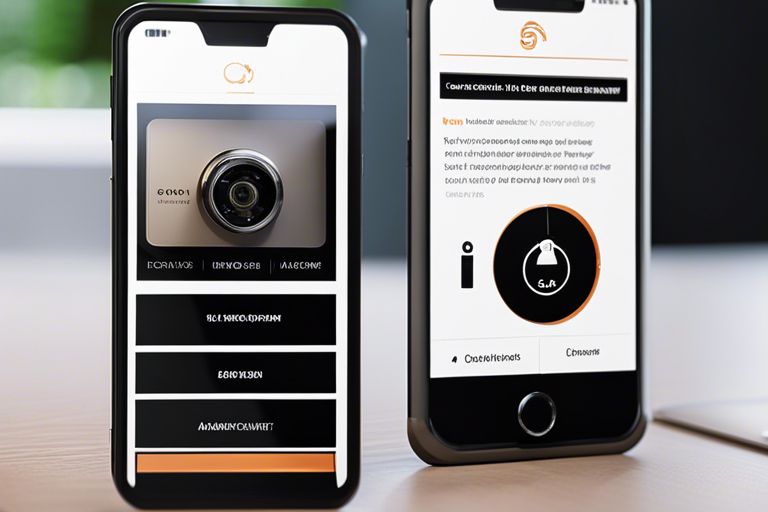Having a well-thought-out Incident Response Plan is crucial for any organisation to effectively mitigate and manage security incidents. In this comprehensive guide, we will walk you through the imperative steps to create a robust plan that can help your business respond swiftly and efficiently to cyber attacks, data breaches, and other security incidents. By identifying potential threats, establishing clear communication channels, defining roles and responsibilities, and conducting regular drills and updates, you can ensure that your organisation is well-prepared to minimise the impact and recover quickly from any security incident that may arise.
Key Takeaways:
- Identify potential threats: Begin by identifying all possible cyber threats that your organization may face.
- Develop a response team: Create a dedicated team responsible for responding to security incidents promptly and effectively.
- Establish clear communication channels: Ensure that there are clear communication protocols in place to notify all relevant stakeholders during an incident.
- Regularly update the plan: Review and update your incident response plan regularly to adapt to evolving threats and technologies.
- Conduct training and drills: Train your response team regularly and conduct simulated drills to test the effectiveness of the plan.
Preparation: Laying the Groundwork for Your Plan
Identifying Key Roles and Responsibilities
Before creating your incident response plan, it is crucial to identify key roles and responsibilities within your organisation. Designate individuals who will be responsible for decision-making, communication, technical support, and coordination during an incident. Clearly defining roles will ensure a more efficient and effective response when faced with a security breach.
Understanding Legal and Regulatory Factors
When developing an incident response plan, it is imperative to consider legal and regulatory factors that may impact how you respond to a security incident. Regulations such as the General Data Protection Regulation (GDPR) or the Health Insurance Portability and Accountability Act (HIPAA) may require specific actions in the event of a data breach. It is important to understand these requirements to avoid potential legal ramifications.
- Compliance with GDPR and HIPAA regulations is crucial.
- Ensure your response plan aligns with legal obligations.
- Regularly review and update your plan to reflect any changes in regulations.
Failure to comply with legal and regulatory requirements can result in severe penalties and damage to your organisation’s reputation. Thou must stay informed about relevant laws and regulations to effectively prepare and respond to security incidents.
Developing Your Incident Response Plan
Tips for Constructing an Effective Plan
When developing your incident response plan, it is necessary to follow key steps to ensure its effectiveness. Begin by forming a dedicated team with specialised training in cybersecurity and incident response. Identify and assess potential threats and vulnerabilities to your organisation’s infrastructure. Collaborate with relevant stakeholders to establish clear communication channels and response procedures. Regularly review and update your plan to reflect the evolving cybersecurity landscape. Thou, engage in thorough testing and training exercises to validate the plan’s efficacy.
How to Define Incident Categories and Severity Levels
Defining incident categories and severity levels is crucial for prioritising response efforts. Classify incidents based on their impact on the organisation and the level of criticality. Assign categories such as malware infections, data breaches, or denial of service attacks to differentiate between incidents. Establish severity levels from low to critical to determine the appropriate response strategy. This classification will streamline the response process and ensure that resources are allocated efficiently.
Implementing the Incident Response Plan
How to Conduct Training and Drills
Training and conducting regular drills are crucial components of implementing an effective incident response plan. By simulating various scenarios, employees can familiarise themselves with the procedures and responses required during an incident. This helps in reducing response time and ensuring that everyone knows their roles and responsibilities when a real incident occurs.
Essential Tools and Resources for Response
Having the right tools and resources at your disposal is crucial for an efficient incident response. This includes incident response software, communication tools, a designated response team, and contact lists for external resources such as law enforcement and cyber security experts. These resources are vital for swift and coordinated response to any incident.
Investing in automation tools can also significantly improve response times and accuracy. These tools can help in monitoring and analysing the incident data, automating response tasks, and providing real-time alerts to the response team. By incorporating these tools into your response plan, you can enhance your organisation’s ability to detect and respond to incidents effectively.
After the Incident: Review and Recovery
Effective Ways to Analyze Incident Impact and Response
When an incident occurs, it is crucial to assess its impact and evaluate the response to improve future incident handling. Conducting a thorough analysis can help identify weaknesses in the response plan and areas that require improvement, ensuring a more robust strategy for handling similar incidents in the future.
Tips for Revising and Updating Your Plan Post-Incident
After going through an incident, it is imperative to revise and update your incident response plan accordingly. Revising the plan should include incorporating lessons learned from the incident, updating contact information, and revisiting escalation procedures to enhance the overall effectiveness of the plan.
- Regularly test the updated plan to ensure it is comprehensive and effective.
- Document all changes made for future reference.
- Review the plan with all stakeholders to ensure everyone is aware of their roles and responsibilities.
Assume that a proactive approach to plan revision can strengthen your organisation’s incident response capabilities in the long run.
Creating an Incident Response Plan: A Crucial Step in Ensuring Organisational Security
Developing an incident response plan is a critical aspect of any organisation’s cybersecurity strategy. By outlining clear procedures and responsibilities in the event of a security breach, companies can minimise the impact of incidents and safeguard their assets. It is necessary to involve key stakeholders, conduct regular training and simulations, and continuously update and improve the plan to stay ahead of evolving threats. Prioritising the development of a comprehensive incident response plan is paramount in enhancing the resilience of an organisation and maintaining trust with stakeholders. By following these steps and adapting to emerging risks, businesses can effectively mitigate the impact of security incidents and protect their valuable data and operations.
FAQ
Q: What is an Incident Response Plan?
A: An Incident Response Plan is a structured approach that outlines the steps to be taken in the event of a cybersecurity incident or data breach.
Q: Why is it important to have an Incident Response Plan?
A: Having an Incident Response Plan is crucial as it helps organisations respond quickly, efficiently, and effectively to cyber threats, minimising the impact of an incident on the business.
Q: What are the key components of an Incident Response Plan?
A: The key components of an Incident Response Plan include preparation, identification, containment, eradication, recovery, and lessons learned.
Q: How should an Incident Response Plan be tested?
A: An Incident Response Plan should be tested through regular tabletop exercises, simulations, and drills to ensure that the plan is up-to-date, effective, and all personnel are familiar with their roles and responsibilities.
Q: Who should be involved in the development of an Incident Response Plan?
A: The development of an Incident Response Plan should involve key stakeholders such as IT teams, security teams, legal teams, senior management, and any other relevant personnel to ensure a comprehensive and coordinated response to incidents.






